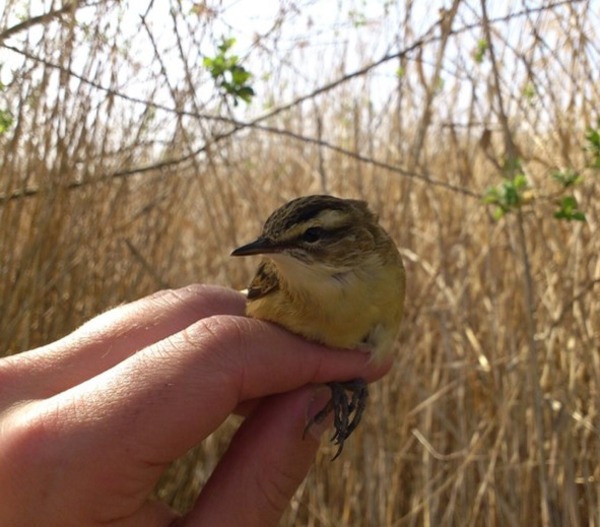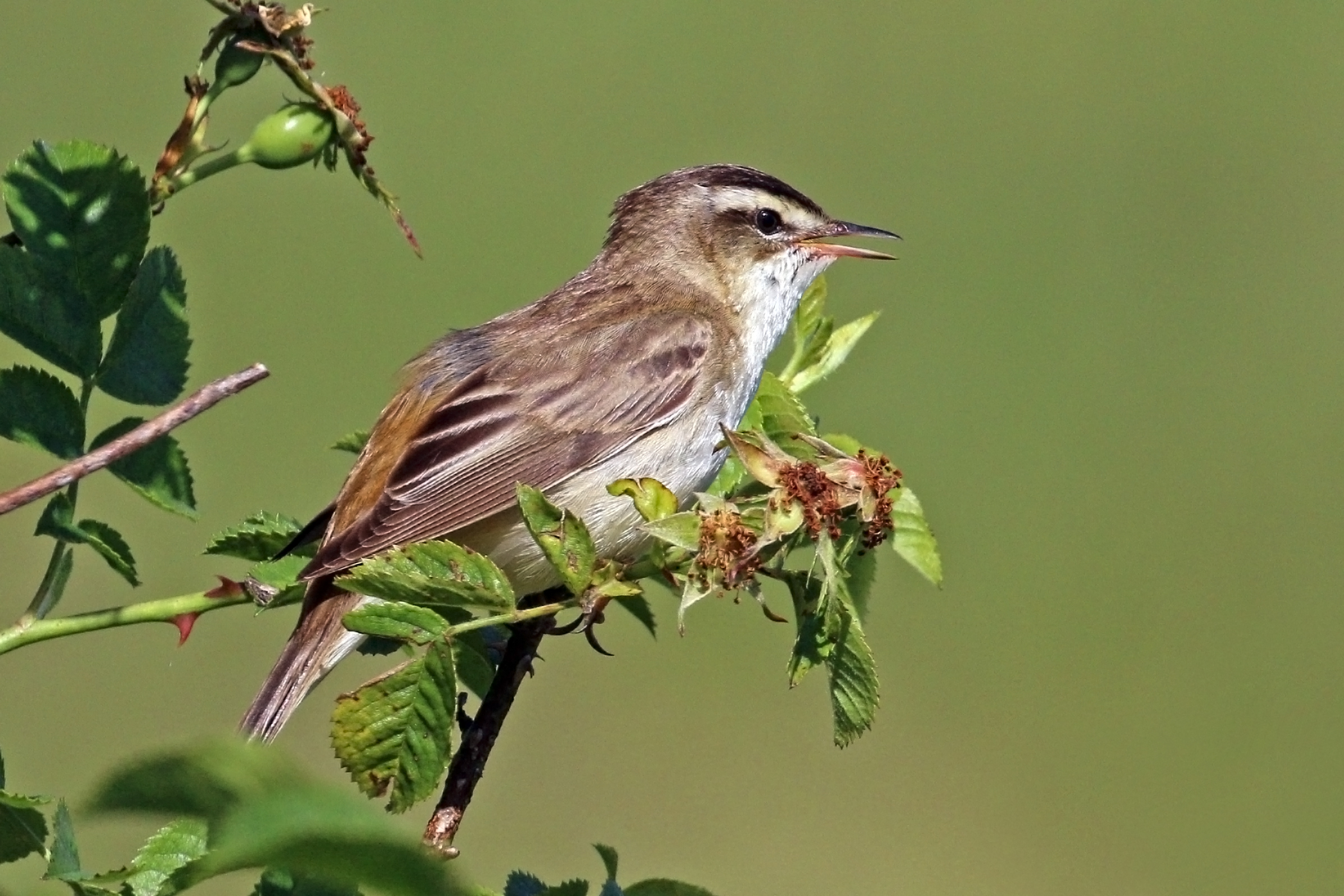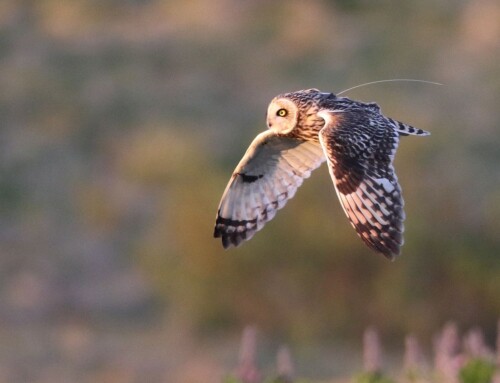 LINKED PAPER
LINKED PAPER
Assessing the fatty acid profile of migratory birds with different fuelling strategies. Lee, M., Viegas, I., Norte, A.C., Ramos. J.A. & Araújo, P.M.. 2022 Ibis. doi: 10.1111/ibi.13114 VIEW
Central Portugal, presents an important location on the East Atlantic flyway, mainly for migratory species, such as small passerines. Hundreds of migratory passerines cross through the Iberian Peninsula every year, both during the spring and autumn migratory seasons. Paul do Taipal (40.18oN 8.69oW) and Choupal National Forest (40.2oN 8.4oW) are two sites classified as Special Protection Areas (SPA) that provide several resources (e.g., food sources and resting sites) for migratory passerines during stopover periods, given their geographical positions linking wintering with summer breeding populations. In 2013 we captured 82 migratory birds from six species, and performed fat biopsies to acquire subcutaneous fat tissue levels in order to quantify fatty acid composition. These species can exhibit differences in their migratory strategies but with the same purpose, drive enhanced migratory performance. This study proposes four different fuelling models according to the stage in which major fat deposition is thought to take place along the migratory flyway (early, late, gradual or constant fueller).
The species chosen were 1) Sedge Warblers (Acrocephalus schoenobaenus) that carry out major fuelling early, and thus begin non-refuelling migration long before the northern border of the Sahara. 2) Garden Warblers (Sylvia borin) and 3) Pied Flycatchers (Ficedula hypoleuca) which tend to increase body mass all the way along the migration route, refuelling at each stop more than enough to reach the next, so that sufficient fuel to cross the desert is gradually accumulated while travelling south. 4) Reed Warblers (Acrocephalus scirpaceus) do not show a steady increase in body mass towards the south, and instead accumulate the required energy to cross the desert in North Africa. 5) Willow Warblers (Phylloscopus trochilus) fuelling along the East Atlantic flyway, and 6) Barn Swallows (Hirundo rustica) appear to follow this strategy as they have the ability to feed on the wing, which reduces the need to stop for long periods along the migratory route.
Do migratory species with different migratory strategies have different fatty acid profiles?
Different dietary sources will lead to differences in the composition of fatty acid stores potentially increasing variation within species that share the same fuelling strategy. Despite the small sample size for some migratory species, our study outlined important differences among migratory strategies supporting the hypotheses that fatty acid accumulation strategies of migrant birds may involve building fatty acids stores with more unsaturated fatty acids than saturated fatty acids, and more monounsaturated fatty acids than polyunsaturated fatty acids (Pierce et al., 2004; Pierce and McWilliams, 2005, 2014).

Figure 1 Sedge Warbler captured at Paul do Taipal, Portugal.
We found that, Early fuellers, i.e., Sedge Warblers, presented higher values of both polyunsaturated fatty acids and omega-3 fatty acids, mainly because they do not refuel along the migratory route, suggesting that early fuellers show higher polyunsaturated fatty acids levels on adipose tissue that might enhance exercise performance during migration. Gradual fuellers, such as Garden Warblers and Pied Flycatchers, feed more on fresh fruits during autumnal migration over a wide range of the Western Palearctic. However, Pied Flycatchers also feed on insects (Hernándes 2009), highlighting the differences found on the fatty acids composition in these two species sharing the same migratory strategy. This shows that species can adjust their migratory strategy according to their physiological condition, increasing the consumption of insects along the migratory route. Late fuellers, i.e., Reed Warblers feed more on widespread insects such as Diptera, and less on aphids (Schaub and Jenni 2001), and make a high number of short stopovers along Europe, accumulating at each site the required fuel load to reach the following stopover site. Previous studies stated that it is hard to evaluate the migratory strategy chosen by Willow Warblers, but according to our results it is reasonable to assume that this species performs a Late fueller strategy, due to the higher similarity found between their fatty acid profiles/ dietary preferences and those of Reed Warblers. Finally, constant fuellers, i.e., Barn Swallows presented relatively higher levels of polyunsaturated fatty acids, and their capacity of feeding during the flight should help to justify their migratory strategy, by feeding at a rich aquatic invertebrates diet.
Identifying hotspots which is essential for effective fuel store accumulation for some migratory species could be very important for conservation, to ensure that conditions in these locations can remain stable. The present method represents an effective, minimally disturbing way to explore the differences on fat stores composition, and certainly with greater sample sizes from a greater number of sample locations, a deeper understanding of this phenomenon will be possible and will provide valuable knowledge on how conservation can be more efficient along the migratory route.
References
Hernández, Á. 2009. Summer-autumn feeding ecology of Pied Fly-catchers Ficedula hypolueca and Spotted Flycatchers Muscicapa striata: the importance of frugivory in a stopover area in north-west Iberia. Bird Conservation International 19: 224-238. VIEW
Pierce, B. J., McWilliams, S.R., Place, A.R. & Huguenin, M.A. 2004. Diet preferences for specific fatty acids and their effect on composition of fat reserves in migratory Red-eyed Vireos (Vireo olivaceous). Comparative Biochemistry and Physiology Part A: Molecular & Integrative Physiology 138: 503-514 VIEW
Pierce, B.J. & McWilliams, S.R. 2005. Seasonal changes in composition of lipid stores in migratory birds: causes and consequences. The Condor 107: 269 VIEW
Pierce, B.J. & McWilliams, S.R. 2014. The fat of the matter: how dietary fatty acids can affect exercise performance. Integrative and Comparative Biology 54: 903-912 VIEW
Schaub, M. & Jenni, L. 2001. Stopover durations of three warbler species along their autumn migration route. Oecologia 128: 217-227 VIEW
Image credit
Top right: Sedge Warbler (Acrocephalus schoenobaenus) © Charles J. Sharp CC BY SA 4.0 Wikimedia Commons.
If you want to write about your research in #theBOUblog, then please see here.




